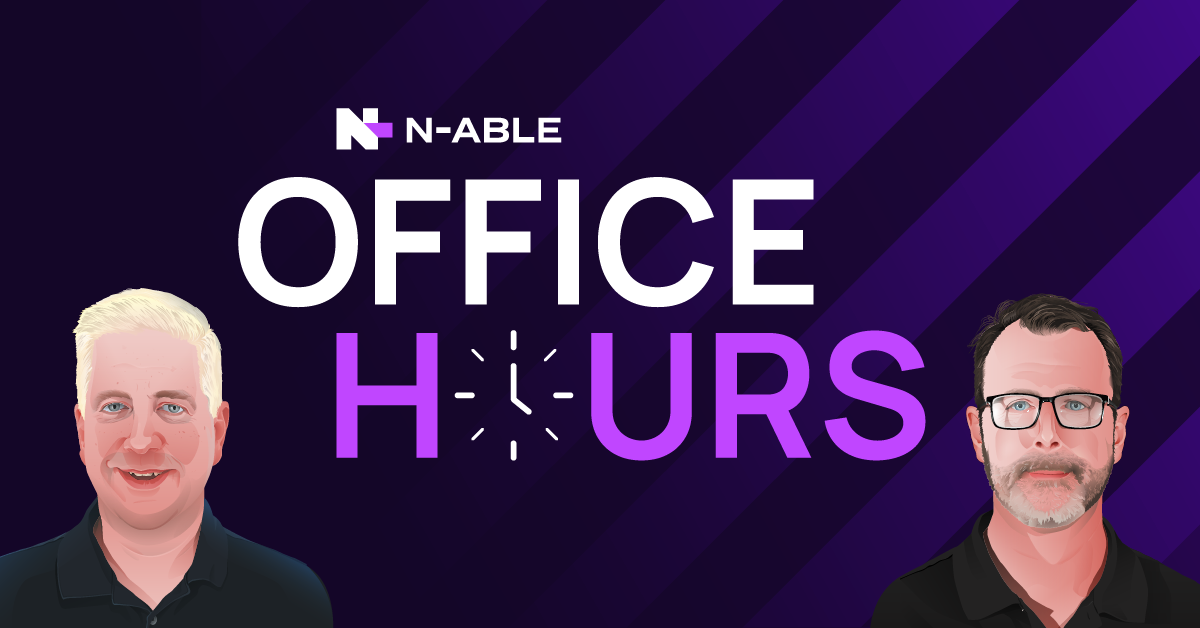Web applications face an unprecedented barrage of cyber threats. For MSPs and IT professionals tasked with protecting client environments, understanding web application firewalls has become essential knowledge.
Web Application Firewall (WAF) Definition and Overview
A Web Application Firewall (WAF) represents a critical security barrier that stands between your web applications and the countless threats circulating across the internet. It filters, monitors, and blocks malicious HTTP/HTTPS traffic traveling to and from web applications. Unlike traditional network firewalls that operate at lower network layers, WAFs function at the application layer (Layer 7), providing granular analysis of web traffic and protecting against application-specific attacks.
How Does a Web Application Firewall Work?
WAFs operate as reverse proxies, positioning themselves between users and your web applications. When a user sends a request to your web application, the WAF intercepts that request first, analyzing it against predetermined security rules before allowing legitimate traffic to reach your server.
The WAF examines several components of HTTP requests:
- GET requests that retrieve data from servers
- POST requests that send data to modify server state
- PUT requests that update or create server resources
- DELETE requests that remove server data
This comprehensive analysis happens in real-time, ensuring malicious requests are blocked before they can exploit vulnerabilities in your applications. The WAF maintains security rule sets that define what constitutes normal versus suspicious behavior, automatically updating these rules to address emerging threats.
The system analyzes request headers, query strings, and message bodies for malicious patterns. When suspicious activity is detected, the WAF can block the request, log the incident, and alert security teams—all while allowing legitimate users to access applications without interruption.
Types of WAF Deployments
Selecting the right WAF deployment model depends on your specific infrastructure requirements, budget considerations, and performance needs.
Network-Based WAF
Hardware appliances installed directly within your network infrastructure provide minimal latency since they operate locally. However, these solutions require significant upfront investment and ongoing maintenance of physical equipment. Network-based WAFs offer maximum control but demand substantial resources for management and updates.
Host-Based WAF
Software solutions integrated directly into application servers provide customizable protection tailored to specific applications. Host-based WAFs consume local server resources and require technical expertise for implementation and maintenance. While more affordable than hardware solutions, they can impact application performance if not properly optimized.
Cloud-Based WAF
Cloud-delivered WAF services offer the most accessible deployment option, requiring minimal upfront investment and providing automatic updates without additional effort. These solutions scale effortlessly with your needs and often include additional security features like DDoS protection and content delivery networks. Cloud-based WAFs provide enterprise-grade protection with simplified management, making them ideal for organizations with limited in-house security resources.
Adlumin MDR: Advanced 24/7 managed security
Importance of Web Application Firewall for MSPs and IT Teams
Modern businesses rely heavily on web applications for customer interactions, data processing, and core business functions. This dependence creates attractive targets for cybercriminals seeking to exploit application vulnerabilities for financial gain or data theft.
MSPs and IT professionals face increasing pressure to protect client environments against sophisticated attacks targeting web applications. Web application firewalls provide essential protection against the OWASP Top 10 vulnerabilities, including SQL injection, cross-site scripting (XSS), and cross-site request forgery attacks.
WAFs enable proactive threat mitigation by blocking attacks before they reach vulnerable applications. This prevention approach reduces the likelihood of successful breaches and minimizes the potential for costly downtime or data compromises that can damage client relationships and business reputation.
For organizations handling sensitive data like payment information or personal records, WAFs help meet compliance requirements such as PCI DSS. These regulatory frameworks often mandate firewall protection for systems processing cardholder data, making WAF implementation not just a security best practice but a compliance necessity.
WAFs also provide valuable security insights through detailed logging and reporting capabilities. IT teams can analyze attack patterns, identify trending threats, and adjust security policies accordingly. This visibility enables more informed security decisions and helps demonstrate security posture to clients and stakeholders.
Integration with existing security tools amplifies WAF effectiveness. When combined with solutions like endpoint detection and response (EDR), intrusion prevention systems (IPS), and vulnerability management tools, WAFs contribute to a comprehensive layered defense strategy that addresses threats across multiple vectors.
Key Takeaways and Next Steps
Web Application Firewalls serve as indispensable guardians for modern web applications, providing targeted protection against application-layer attacks that traditional network security tools cannot address. Understanding WAF technology and deployment options empowers MSPs and IT professionals to make informed decisions about protecting environments.
The choice between network-based, host-based, and cloud-based WAF deployments depends on your specific requirements for control, performance, and resource allocation. Cloud-based solutions often provide the best balance of protection, scalability, and manageability for growing organizations.
Ready to strengthen your security posture with enterprise-grade protection? N‑able’s comprehensive security solutions provide the tools and expertise needed to defend against evolving cyber threats. Our integrated approach to cybersecurity helps MSPs and IT teams build resilient defenses while simplifying security management across digital ecosystems.




